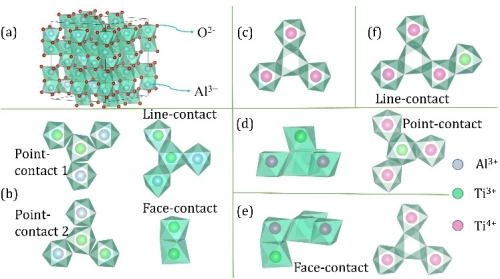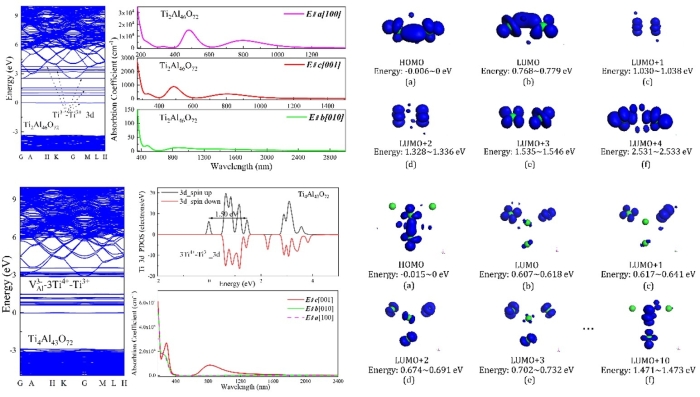Recently, a research group from Shanghai Institute of Optics and Fine Mechanics (SIOM), Chinese Academy of Sciences (CAS), proposed a new theory on the origin of residual infrared absorption in Ti:sapphire laser crystals. The related research results have been published in Photonics Research on May 4, 2021.
Ti:sapphire (also called Ti-doped α-Al2O3) is one of the three basic laser crystal materials. Due to its excellent physical and chemical, spectral, and laser properties, Ti:sapphire has been one of the key materials for super-intense ultrafast laser devices.
Since the laser properties of Ti:sapphire was reported in 1982, the residual infrared absorption (with peak value around 800 nm) which coincident with the laser emission band has been the key problem affecting its laser emission efficiency. Therefore, the determination of the origin of residual infrared absorption has been a research hotspot in the community of Ti:sapphire laser crystals.
In this study, the research group performed a systematic theoretical study on this key problem. Through the analysis of the crystal structure of alumina and the calculation of the electronic and optical properties of the possible ion pair defect models in Ti:sapphire, for the first time, the near infrared absorption spectra consistent well with the experiments was obtained by theoretical calculation. Meanwhile, the microscopic mechanism that causes the residual absorption was successfully revealed from the perspective of electron energy level transition.
Researchers proposed a theory that the residual infrared absorption was jointly dominated by the line-contact Ti3+-Ti3+ ion pair and face-contact Ti4+-Ti3+ ion pair, which successfully explain the annealing characteristics, doping concentration dependence, and polarization characteristics of the residual infrared absorption observed by experiments.
Through a series of experiments, researchers achieved the theoretical traceability and breakthrough on the key problem which affects the laser emission efficiency of Ti:sapphire crystals. It is of great significance for the further study and development of Ti:sapphire laser crystals.
In addition, researchers noted that this research also provided an idea for screening new titanium doped laser matrix with no residual infrared absorption.
This work was supported by Strategic Priority Research Program of Chinese Academy of Sciences; National Key R&D Program of China; National Natural Science Foundation of China; Shanghai Technical Trade Measures Response Special Project.

Fig. 1. (a) The supercell structure of Al2O3, (b) 4 kinds of Ti3+-Ti3+ ion pair models, (c) 3Ti4+-VAl3- model, (d)~(f) 3 kinds of Ti3+-3Ti4+-VAl3- models. (Image by SIOM)

Fig. 2 The electronic and optical properties of line-contact Ti3+-Ti3+ ion pair model and face-contact Ti4+-Ti3+ ion pair. (Image by SIOM)
Article website:
https://doi.org/10.1364/PRJ.418395
Contact:
WU Xiufeng
General Administrative Office
Shanghai Institute of Optics and Fine Mechanics, CAS
Email: xfwu@siom.ac.cn
Web: http://english.siom.cas.cn/